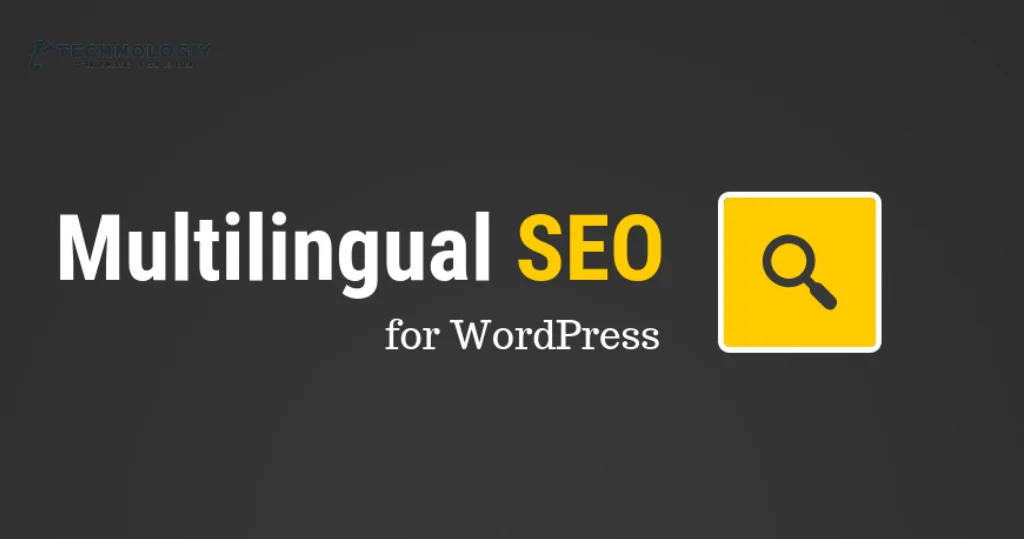Mastering WordPress Multilingual Optimization: The Ultimate Guide Are you looking to take your WordPress website to the next level by making it multilingual? With the increasing globalization of the internet, reaching a wider audience has become crucial for businesses and individuals alike. By optimizing your WordPress website for multilingual functionality, you can effectively communicate with your target audience in their preferred language.
In this ultimate guide, we will delve into the world of WordPress Multilingual Optimization, providing you with comprehensive insights and practical tips to master this essential aspect of website development.
Why WordPress Multilingual Optimization Matters:
As the leading content management system (CMS) in the world, WordPress powers millions of websites across the globe. While English may be the most widely spoken language online, it is crucial to recognize that not everyone speaks or understands it. By optimizing your WordPress website for multilingual support, you can tap into new markets, connect with diverse audiences, and drive more traffic and engagement to your site.
Choosing the Right Multilingual Plugin:
To unlock WordPress Multilingual Optimization, you need a reliable and feature-rich multilingual plugin. With numerous options available in the market, it can be overwhelming to choose the right one for your website. However, plugins like WPML, Polylang, and Weglot offer powerful features and seamless integration with WordPress, making them popular choices among website owners. Evaluate your specific requirements and select a plugin that suits your needs best.
Translating Your Website Content:
Once you have installed and activated your chosen multilingual plugin, it’s time to start translating your website content. From pages and posts to menus and widgets, every element of your website needs to be translated accurately. Ensure that you have a well-defined translation workflow in place to maintain consistency and quality throughout the process. Leverage professional translation services or utilize machine translation tools to expedite the process, but remember to review and edit the translations for accuracy.
Optimizing Your Multilingual URLs:
URL structure plays a crucial role in search engine optimization (SEO). When it comes to multilingual websites, it is essential to optimize your URLs to ensure better visibility and accessibility. Use language-specific subdirectories or subdomains to signify different languages. For example, example.com/en/ for English and example.com/es/ for Spanish. This helps search engines understand the language targeting of your content and improves the user experience for multilingual visitors.
Implementing Hreflang Tags:
Hreflang tags are HTML attributes that inform search engines about the language and geographical targeting of specific pages. By implementing hreflang tags correctly, you can avoid duplicate content issues and help search engines display the most relevant version of your website in search results. If you are using a multilingual plugin, it should handle the implementation of hreflang tags automatically. However, it’s always beneficial to double-check and ensure they are correctly set up for each page.
Optimizing Multilingual SEO Elements:
In addition to URLs and hreflang tags, there are other SEO elements that require optimization for your multilingual website. Meta titles, meta descriptions, headings, and alt tags should be translated and optimized for each language. Conduct thorough keyword research for each target language and incorporate relevant keywords into your content and meta tags. Remember to keep these elements concise, engaging, and aligned with your brand voice.
Testing and Monitoring Multilingual Performance:
Once you have completed the optimization process, it is crucial to test and monitor the performance of your multilingual website. Conduct thorough testing to ensure that all translated content appears correctly, links are functioning properly, and the user experience is seamless across different languages. Monitor your website’s performance using analytics tools and track the organic traffic and engagement metrics for each language. This data will help you identify areas for improvement and make necessary optimizations.

Final Thoughts:
Mastering WordPress Multilingual Optimization is a key step towards expanding your reach and connecting with a global audience. By selecting the right multilingual plugin, translating your content accurately, optimizing URLs and SEO elements, and testing and monitoring performance, you can create a seamless multilingual experience for your website visitors. Remember to stay updated with the latest developments in multilingual optimization and continuously optimize your website to stay ahead of the competition. Start your journey towards WordPress Multilingual Optimization today and unlock the true potential of your website!
WordPress Multilingual Optimization:
10 Essential Tips for Adult UsersIf you’re an adult user of WordPress looking to optimize your website for multiple languages, you’ve come to the right place. In this concise blog post, we will provide you with 10 essential tips for WordPress multilingual optimization. By implementing these strategies, you’ll be able to reach a wider audience and ensure a seamless experience for all your users.
Choose a Reliable Multilingual Plugin:
The first step in optimizing your WordPress site for multiple languages is selecting a reliable multilingual plugin. There are many options available, but make sure to choose one that is compatible with your theme and offers essential features like language switchers and translation management.
Optimize Permalinks for Multilingual SEO:
Ensure that your permalinks are optimized for multilingual SEO by using language-specific URLs. This will help search engines understand the language of your content and improve your website’s visibility in different regions.
Use a Language Switcher:
Implement a language switcher on your website to allow users to easily switch between different languages. This will enhance the user experience and make it more convenient for your visitors to navigate your site in their preferred language.
Translate Your Content Professionally:
When translating your content, it’s essential to hire professional translators or use reliable translation services. Avoid relying solely on machine translation tools, as they may produce inaccurate or awkward translations that can harm your website’s reputation.
Optimize Metadata for Each Language:
Optimize your metadata, including titles, descriptions, and keywords, for each language you support. This will ensure that search engines properly index and display your content in the appropriate language based on user queries.
Create Language-Specific Sitemaps:
Generate separate sitemaps for each language on your website. This will help search engines crawl and index your multilingual content more effectively, leading to improved visibility in different language-specific search results.
Implement Hreflang Tags:
Hreflang tags are HTML tags that signal to search engines the language and regional targeting of your content. Implementing these tags correctly will help search engines serve the appropriate language version of your website to users in different regions.
Optimize Images for Multilingual Websites:
When using images on your multilingual website, don’t forget to optimize their alt tags and filenames for each language. This will help search engines understand the content of the images and improve their visibility in relevant image search results.
Test and Monitor Website Performance:
Regularly test your website’s performance to ensure fast loading times and smooth user experience across different languages. Monitor your website’s speed, accessibility, and responsiveness to identify and fix any issues promptly.
Provide Language-Specific Support:
If you offer customer support or have a contact page on your website, make sure to provide language-specific support options. This will help your users feel more confident and comfortable reaching out to you in their preferred language.
By following these 10 essential tips for WordPress multilingual optimization, you’ll be well on your way to creating a website that caters to a global audience. Remember, the key to success lies in providing a seamless and user-friendly experience in all supported languages. Implement these strategies today and unlock the true potential of your multilingual WordPress website!
Are you ready to take your WordPress multilingual optimization to the next level? Start applying these tips and watch your website thrive in different regions and languages.
Top Plugins for WordPress Multilingual Optimization:
WordPress has become one of the most popular content management systems around the world. With its immense flexibility and ease of use, it has empowered countless websites and blogs to reach a global audience. And if you’re looking to take your WordPress site to the next level in terms of multilingual optimization, then you’re in luck! In this blog post, we’ll be exploring the top plugins that can help you achieve just that.
WPML (WordPress Multilingual Plugin):
When it comes to WordPress multilingual optimization, WPML is the go-to plugin for many website owners. With its powerful features and user-friendly interface, WPML makes it easy to translate your website content into multiple languages. It also offers advanced features like language switching, language-specific SEO optimization, and compatibility with popular WordPress themes and plugins.
Polylang:
Polylang is another excellent plugin that provides a seamless way to create a multilingual WordPress website. With Polylang, you can easily translate posts, pages, widgets, menus, and even custom post types. It supports RTL languages, offers automatic language detection, and integrates with popular translation services like Lingotek and Google Translate.
Weglot:
Weglot is a cloud-based translation plugin that offers a simple and efficient way to make your WordPress site multilingual. Once installed, it automatically detects and translates your content into multiple languages. Weglot also provides a user-friendly interface for managing translations, and it supports SEO-friendly URLs and metadata for each language.
Translate Press:
TranslatePress is a unique translation plugin that allows you to translate your website directly from the front-end. With its intuitive visual editor, you can easily translate any element on your site, including text, images, and even theme and plugin strings. TranslatePress also offers SEO support for multilingual sites, making it an excellent choice for WordPress multilingual optimization.
G-Translate:
G-Translate is a popular translation plugin that offers machine translation for your WordPress site. It automatically translates your content into multiple languages using Google Translate, and it provides a language switcher widget for visitors to switch between languages. GTranslate also offers SEO-friendly URLs and supports caching for improved performance.
In conclusion, optimizing your WordPress site for multilingual audiences is essential to reach a wider audience and expand your global presence. Thankfully, there are several top-notch plugins available to help you achieve this goal. Whether you choose WPML, Polylang, Weglot, TranslatePress, or GTranslate, you can be confident that your website will be efficiently translated and optimized for different languages. So, go ahead and choose the plugin that best suits your needs, and unlock the full potential of your WordPress site for a global audience today!
Note: Remember to always choose plugins that are regularly updated and compatible with your WordPress version to ensure optimal performance and security.
